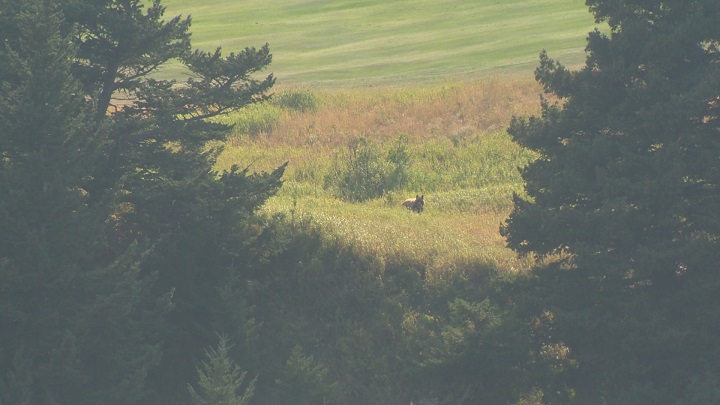It’s one of the biggest attractions in Waterton Lakes National Park: a chance to go up close and personal with wildlife.

But many of those animals were forced to flee when a wildfire ripped through the park.
“Animals would move, birds would fly to different places and get out of the way of the fire, mammals, all your deer, your bears, that sort of group of animals would just move and seek out areas ahead of the fire,” Lethbridge College wildlife biologist Terry Kowalchuk told Global News.
The Kenow fire has been estimated at 35,000 hectares in size, and it has turned much of the park’s landscape barren.
“In the immediate term there might be a bit of a hardship,” Kowalchuk said.
“Animals may move, may be displaced, but in the short term we have new growth so next spring we will have regeneration of a lot of the plants, and plants that may not have been present in abundance now become more abundant and animals can take advantage of that.”
A herd of bison that lives in the park was relocated prior to the evacuation order.
But the bison are among the few animals in the park that can be captured and moved.
Livestock can also be placed at risk when a fire like this moves in.
“If they are exposed for a long period of time or to a high enough concentration of smoke, they will receive lung damage and that can be temporary or permanent,” said Dr. Ryan Mohr, a veterinarian with Ranch Docs Veterinary Services.
The effects can take months to surface, he added. He urged producers to watch for a decline in their livestock’s health right through to the spring.
READ MORE: Waterton fire: a look at the pristine hamlet threatened by wildfire
Ranchers have been busy hauling and herding cattle from the area, but there is still a risk even after the fire passes.
“The heat will stay in the ground for a long period of time, and so if producers aren’t careful that heat will damage the animals feet as well as potentially damage udders,” said Mohr. He added his clinic saw several cases of this after a large fire on the Blood Reserve a few years ago.
For both wildlife and livestock, the long term effects are a wait and see situation.



Comments